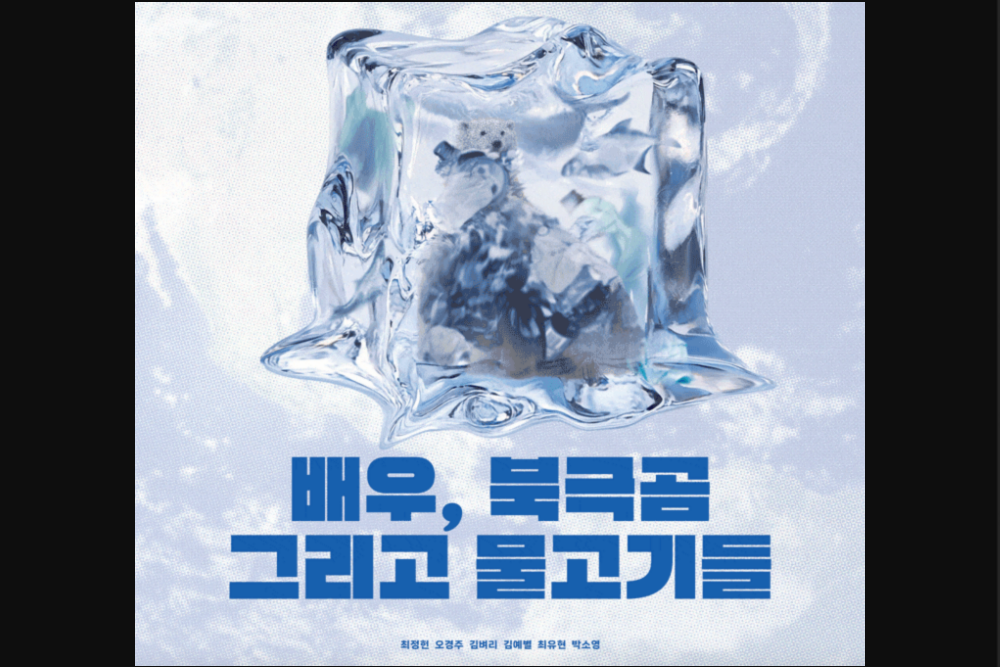1. The Brilliant Moments and Shadows Left by Local Festivals
The Front of Local Festivals: The Power to Revitalize Local Economy and Culture
Modern festivals no longer just provide enjoyment and leisure; they have become a cultural industry that creates significant value for local communities and the economy. Festivals utilize the cultural resources of a region, building unique themes based on the local community’s traditional culture, art, and natural resources. Through this, festivals help establish a distinct regional identity and enhance brand value. In particular, local festivals play a crucial role not only as one-time cultural events but also in strengthening community identity and revitalizing the local economy.
Through festivals, local communities can create various employment opportunities, and by involving local residents in the preparation and operation processes, a sense of community can be strengthened. Not only does the hiring of personnel for festival operations contribute, but during the festival period, the demand in industries such as accommodation, food and beverages, and transportation increases, having a positive impact on the local economy as a whole. As the economic value of festivals continues to be emphasized, each region is focusing more on developing unique festivals to attract tourists, resulting in an increasing trend in the number of regional festivals nationwide.
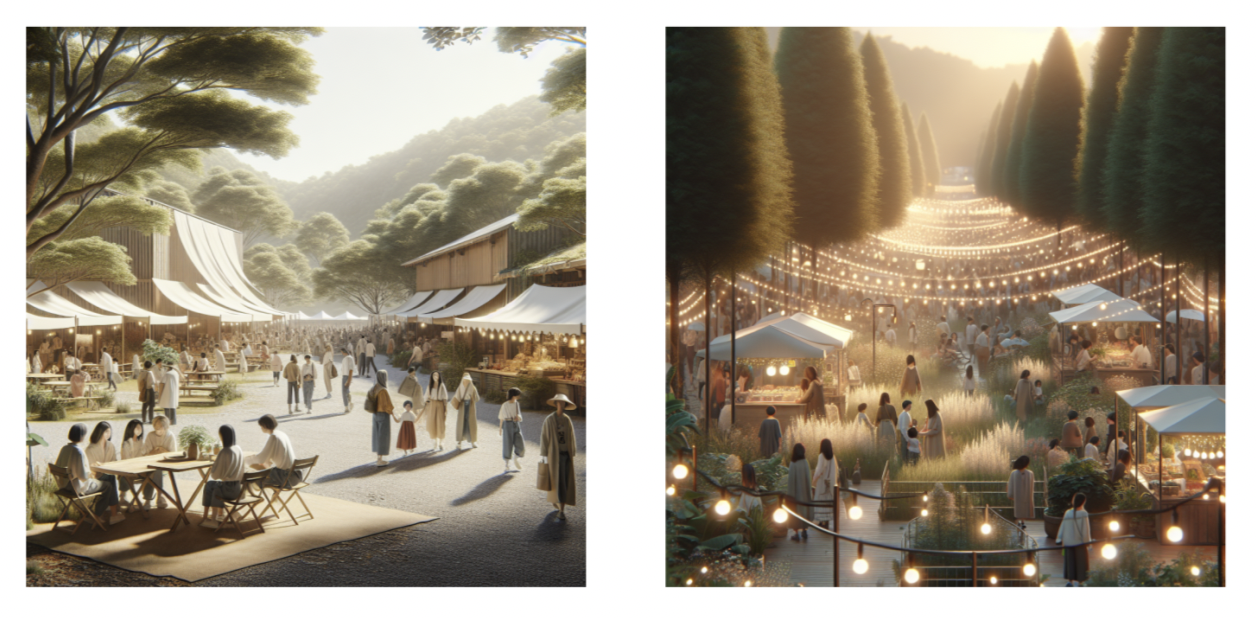
(Source: MIRI CANVAS Design Lab AI Tools, 2024)
The Domestic Regional Festival Craze: Unpacking the Background
The activation of regional festivals in Korea can be largely attributed to the introduction of local autonomy in 1992 and the subsequent local government elections. With the power to independently promote policies aimed at revitalizing regional culture and economy, local governments began to focus on regional festivals as a key cultural policy. As a result, local governments started to design festivals that reflected their unique characteristics, and made active efforts to attract the attention of both local residents and tourists.
Regional festivals leverage local cultural assets to stimulate the local economy and attract external visitors, thereby enhancing the region’s image. As a result, economic activities within the area increase, leading to higher productivity and strengthening community cohesion, which generates a spillover effect1).
The research report titled “The Impact of Regional Performance Festivals on Attracting Tourists” published by the Korea Culture and Tourism Institute and the Arts Management Support Center in February 2024 has gained attention for its quantitative validation of the economic effects of regional festivals. According to the report, regional festivals positively impact the local economy by increasing card spending and boosting consumer expenditures in the tourism sector through tourist attraction. This shows that regional festivals are not just events but serve as key drivers of economic ripple effects, leading to actual increases in consumption.
In this context, the Ministry of Culture, Sports, and Tourism designates particularly outstanding festivals among regional festivals as “Cultural Tourism Festivals,” which are managed at the national level. This policy support has become a key driver for the qualitative growth of regional festivals. As a result, the number of regional festivals has increased from 884 in 2019, prior to the COVID-19 pandemic, to 1,170 in 2024. According to a report on the status of regional festivals by the National Institute for Country Life and Economy, the number of regional festivals across the country has grown by 32.35% compared to 2019.
According to the Ministry of Culture, Sports and Tourism’s annual statistics on regional festivals2), a total of 1,129 regional festivals were held in 2023, attracting approximately 120 million tourists. It is estimated that around 1,170 regional festivals will take place in 2024, with the number expected to continue increasing in the future. Festivals play an important role in revitalizing the local economy and securing cultural diversity. However, with the growing scale of festivals, a significant cost in the form of “environmental issues” follows behind the splendor of these events.
The Flip Side of Regional Festivals: Environmental Costs and Sustainability Challenges
As the number of festivals increases, the environmental impact, particularly the negative effects on climate change, is also growing. The carbon emissions generated by external visitors using transportation, energy consumption at the festival site, and the use of disposable products all have a significant impact on climate change. The main sources of carbon emissions during festival operations include large-scale transportation, power consumption, the use of single-use items, and waste management. In particular, carbon emissions related to transportation, as visitors travel to the festival, make up the largest portion. Additionally, the energy consumption for electricity use, lighting, and sound systems during festival operations also contributes significantly. According to the AGF3) report, audience movement accounts for about 41% of the total emissions, with the rest primarily coming from food and beverage services, artist travel and accommodation, resource use, and vendor and supplier transportation.
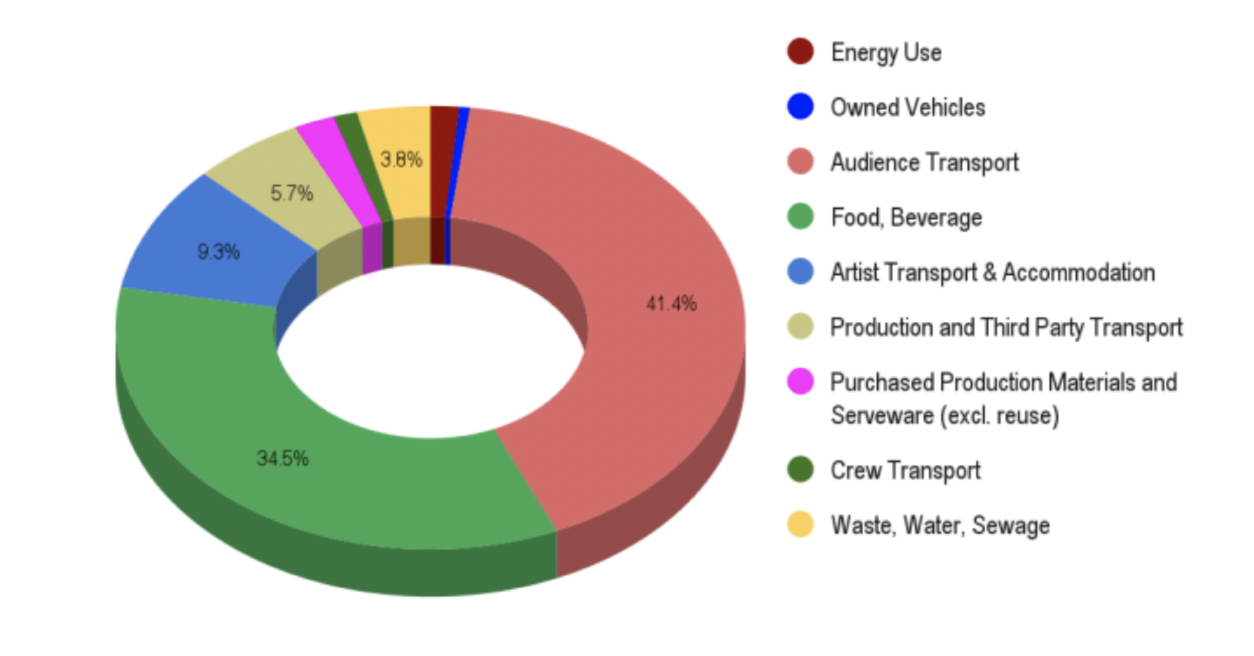
(Source: AGF Festival Carbon Footprint Report v2.0, 2024)
According to the AGF’s Festival Carbon Footprint Report 2022–2023, the average carbon footprint per person per day at outdoor festivals, based on analyzed data, is approximately 11 kg CO₂e, including all categories. When calculated for the scale of domestic regional festivals4), this amounts to a total of 1.13 million tons of carbon dioxide emitted per year. This is equivalent to the amount of carbon a 40-year-old pine tree would absorb over 31 million years. To offset the greenhouse gases generated by regional festivals in one year, 31 million 40-year-old pine trees would be required, which would cover an area of 10,486 hectares. For reference, the total area of pine forests in Korea is 179 hectares, and even considering alternative offset methods, this calculation highlights the significant impact regional festivals have on climate change5).
The carbon footprint is an important indicator for evaluating greenhouse gas emissions, but the environmental impact of festivals is far broader than this. It has limitations when considering wider impacts such as resource depletion, noise pollution, land use, air and water pollution. Festivals can leave long-term effects on local ecosystems and societies even after they have ended, and we can only begin to imagine how many other environmental impacts may lurk that we haven’t yet considered.
Recently, many festivals have started adopting eco-friendly practices to reduce their environmental impact. A significant portion of the festival’s power is being switched to renewable energy, and reusable containers, utensils, and biodegradable packaging are being introduced in place of single-use items. Furthermore, environmental protection messages are being spread before and after the festival to encourage participants to reduce waste emissions and minimize post-festival waste issues, thereby implementing sustainable operational measures.
2. Eco-friendly Destivals in Sokcho
Sokcho, a Tourist City where Nature and People Harmonize
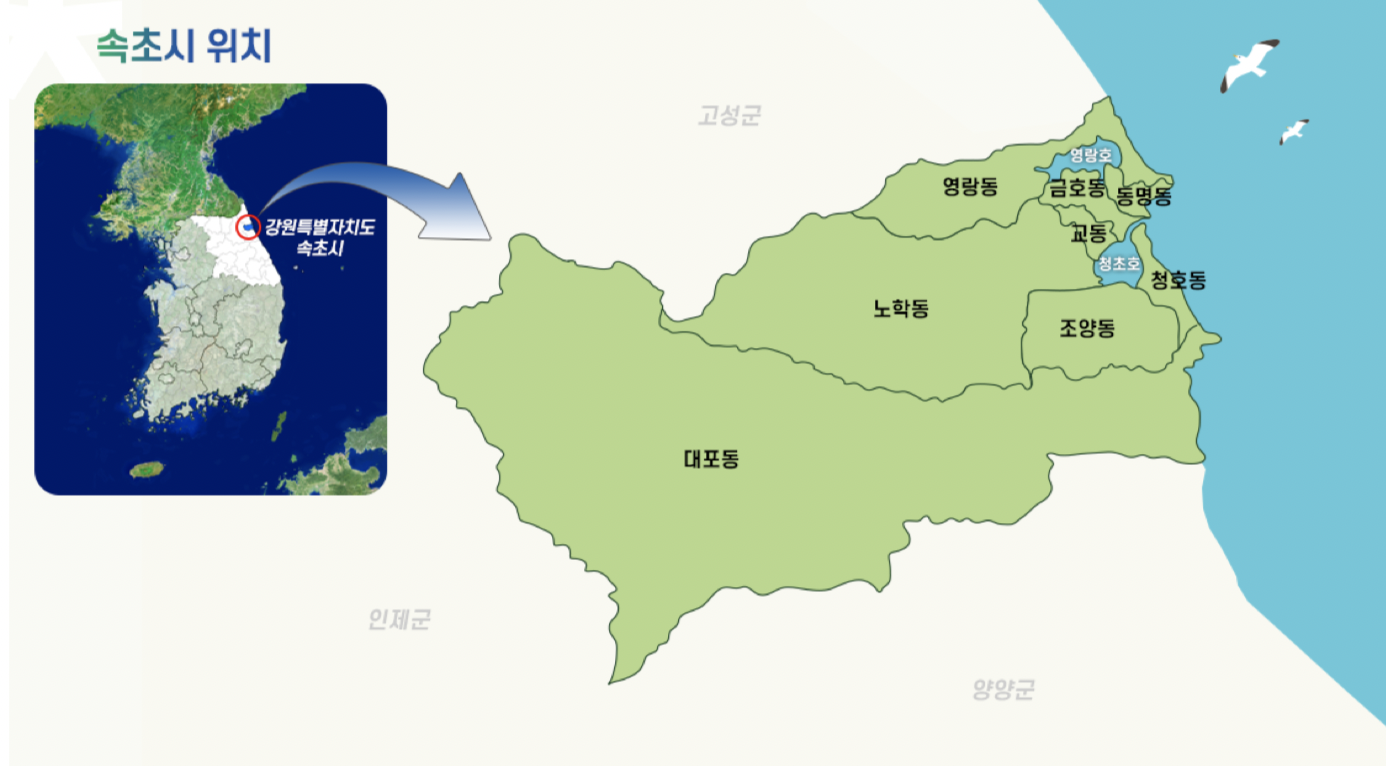
(Source: Sokcho City Hall Website > Sokcho > Nature Tourism)
Sokcho, meaning “a bundle of grass,” is a representative coastal city on the East Sea known for its pristine nature and rich culinary delights. Its accessibility as the closest coastal city to Seoul attracts countless travelers every year. To the west, the majestic Seoraksan National Park stands tall, while the serene Yeongrangho and Cheongchoho lakes in the city center further enhance Sokcho’s natural beauty. A short walk eastward brings you to the vast blue East Sea, where the wonders of nature and the ocean provide great solace to those weary from their daily lives. The diverse charm of Sokcho is what draws travelers year-round, making it a year-round destination.
According to the regional visitor data analyzed by the Korea Tourism Data Lab, as of October 2024, Sokcho attracted 50 million inbound tourists over the past year, ranking 4th in terms of foreign visitors to Gangwon Province and taking the top spot in terms of visitor numbers relative to the province’s area. This demonstrates Sokcho’s immense appeal, offering abundant attractions and experiences. To attract even more visitors, a variety of festivals are held annually. According to the Ministry of Culture, Sports and Tourism’s regional festival statistics, Sokcho hosted a total of four festivals in 2023, and in 2024, seven festivals are planned.
The festivals in Sokcho in 2023 and 2024 have made significant efforts towards carbon neutrality and environmental sustainability. Set against the backdrop of Sokcho’s iconic natural resources—mountains, lakes, and the sea—these festivals, held throughout the year, are organized in sustainable ways, with a clear focus on preserving the region’s environmental value.
Each festival in Sokcho introduces eco-friendly programs tailored to its theme. For instance, during the spring cherry blossom festival, renewable energy is used for nighttime exhibitions. In the summer marine festival, beach clean-up activities and recycling programs are organized against the backdrop of the sea. Meanwhile, the autumn festival, set in the majestic Seorak mountains, focuses on reducing single-use items and promotes the use of recyclable containers. Additionally, participants are engaged in campaigns and hands-on environmental programs that convey the importance of carbon neutrality, offering an opportunity to raise awareness about nature conservation through the festivals.
Sokcho’s efforts have successfully established each festival as a sustainable model while highlighting the unique characteristics of the city. These efforts focus on encouraging tourists visiting Sokcho to join in the eco-friendly journey. We have closely examined specific examples of Sokcho’s carbon-neutral practices and the backgrounds that make them possible, looking into how each festival by the lake, sea, and mountain promotes sustainability.
Sokcho Yeongrangho: A Resolution to Part Ways with Environmental Pollution
Yeongrangho: The Lake where Pollen Analysis was conducted for the First Time in Korea for Climate Change Research
Sokcho is home to two lakes, Yeongrangho and Cheongchoho, both located near the East Sea. Both lakes are coastal lagoons formed by sandbars that develop along the shore, created by waves and currents that build up a barrier, trapping seawater inside. Of the two, Yeongrangho, the larger of the two, is located in the northeast, with a circumference of 7.8 km and an area of 1.21 km² (approximately 350,000 pyeong). Known as a cherry blossom spot and a popular place for walking, Yeongrangho also served as the backdrop for the movie “Decision to Leave.”
What’s even more remarkable is that Yeongrangho is the site where Korea’s first-ever pollen analysis for climate change research was conducted. By analyzing the sediment layers at the bottom of the lake, researchers were able to track climate and vegetation changes on the Korean Peninsula over the past 17,000 years. This research revealed a period of rapid temperature rise between 10,000 and 6,700 years ago and provided insight into the transformation of vegetation during that time. The study has contributed valuable data to climate change research in Korea and has played a crucial role in understanding the ecological and climate changes on the Korean Peninsula since the Ice Age.
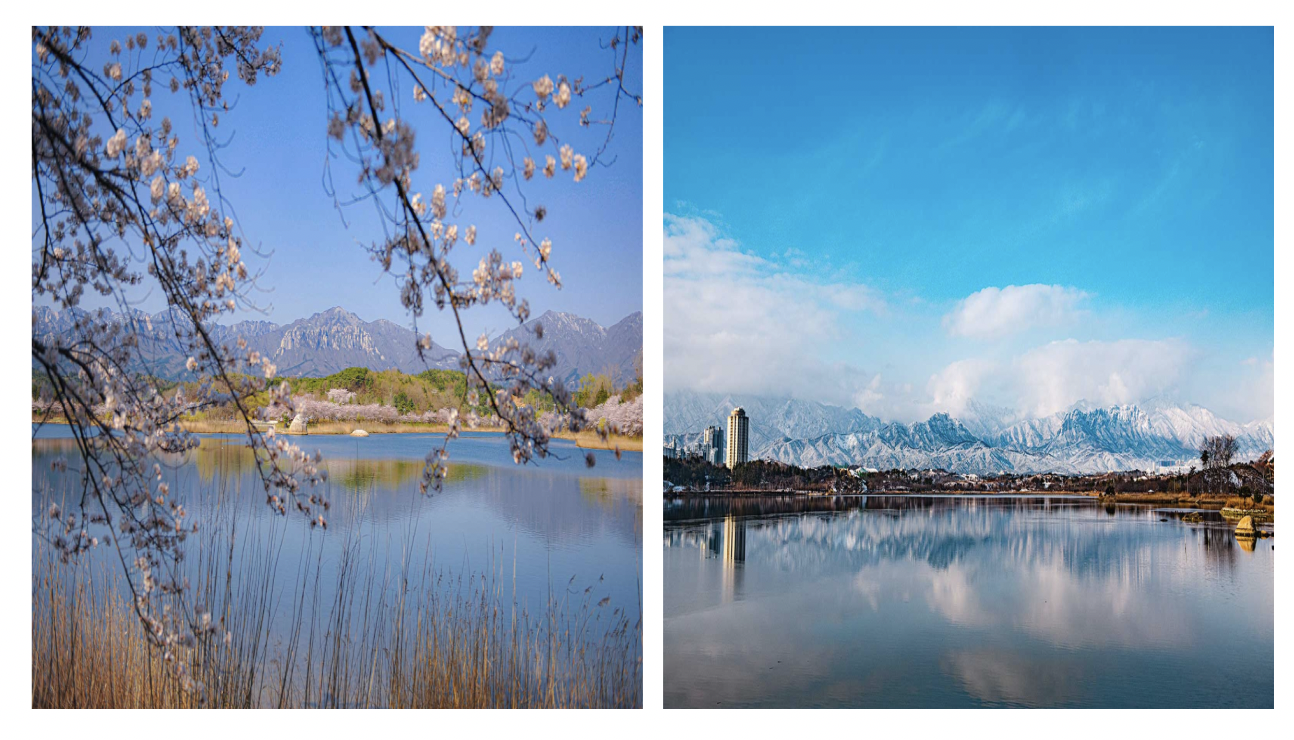
(Source: Sokcho City Hall Website > Tourist Attractions > Nature Tourism)
I have committed a grave sin
During the spring cherry blossom season, the Yeongrangho Cherry Blossom Festival, held against the scenic backdrop of Yeongrangho Lake, offered visitors a chance to relax and recharge through a variety of wellness programs. Activities such as walking and yoga were organized, and a vibrant flea market featuring local residents, along with various busking performances, provided plenty of sights and entertainment. In addition, carbon neutrality was promoted through upcycling of plastic bottle caps and plogging activities, creating a clean and safe festival environment and realizing a sustainable festival model. Although the Yeongrangho Festival ultimately concluded successfully as a sustainable event, it initially faced a period of crisis at its starting point.
On March 28, a headline from Money Today drew widespread attention: “Snowflake Festival Instead of Cherry Blossoms… ‘We Have Committed an Unforgivable Sin,’ Sokcho City Issues Public Apology.” Similar articles were published across various media outlets. Due to unusual spring weather and climate change this year, the cherry blossoms bloomed later than expected. As the scheduled date of the Yeongrangho Cherry Blossom Festival approached, the area around Yeongrangho Lake was still covered not in cherry blossoms, but in snow. Caught in a situation that was both laughable and frustrating, the city shared a video and card news announcing the extension of the festival with the phrase, “We have committed an unforgivable sin.” The post went viral, garnering 2.5 million views, and unintentionally brought widespread attention to the issue of climate change-induced shifts in blooming periods. And so began Yeongrangho’s cherry blossom festival — without any cherry blossoms.
Efforts and Achievements for Sustainability at the Yeongrangho Cherry Blossom Festival
The 2024 Yeongrangho Cherry Blossom Festival was planned from the outset as an eco-friendly event, with sustainability as its top priority. Attracting approximately 39,700 visitors, the festival introduced a variety of environmentally focused programs and facilities, making concrete efforts toward achieving carbon neutrality.
① Minimizing Waste Through Equipment Rental and Use of Reusable Items
During the cherry blossom picnic held on the lawn at Yeongrangho, a free rental program offered “Flower Basket Picnic Sets” to visitors. To prevent the use of disposable mats and single-use plastic items, the initiative was named “Harmless Picnic for the Planet.” Over the course of the festival, 210 groups made use of the rental service. This allowed guests to enjoy eco-friendly picnics without the need to purchase their own supplies, effectively reducing the use of plastic mats and disposable products. The carbon emissions from a single picnic mat can vary depending on the material, but mats made from synthetic fibers such as polyester or polypropylene typically generate about 0.5 to 1.5 kg of CO₂ across their lifecycle—including raw material extraction, manufacturing, transportation, and disposal. With 210 rentals recorded, the festival is estimated to have reduced approximately 210 kg of CO₂ emissions—an amount equivalent to what a 40-year-old pine tree would absorb over more than six years.
The rental program also included the “Cherry Blossom Ssudam Set,” designed to gently care for the natural surroundings of Yeongrangho. The term “Ssudam” is a creative abbreviation of the Korean words meaning “to pick up trash,” and it also represents the identity of Bit-nargo, the prospective social enterprise that organized the event. At the festival, visitors used the Ssudam sets not only to tidy up their own picnic areas but also to voluntarily collect litter in the vicinity. By offering this rental program for free, the festival reduced the use of disposable items and created opportunities for attendees to actively participate in waste reduction and environmental stewardship.
On another side of the lawn, a “Rest Area for All” was set up, featuring reusable items and recycled paper chairs instead of plastic ones. Wooden display stands were used in the flea market booths, emphasizing sustainable materials. Efforts to minimize waste extended beyond the facilities to include festival décor and props, reflecting a consistent commitment to sustainability throughout the event.
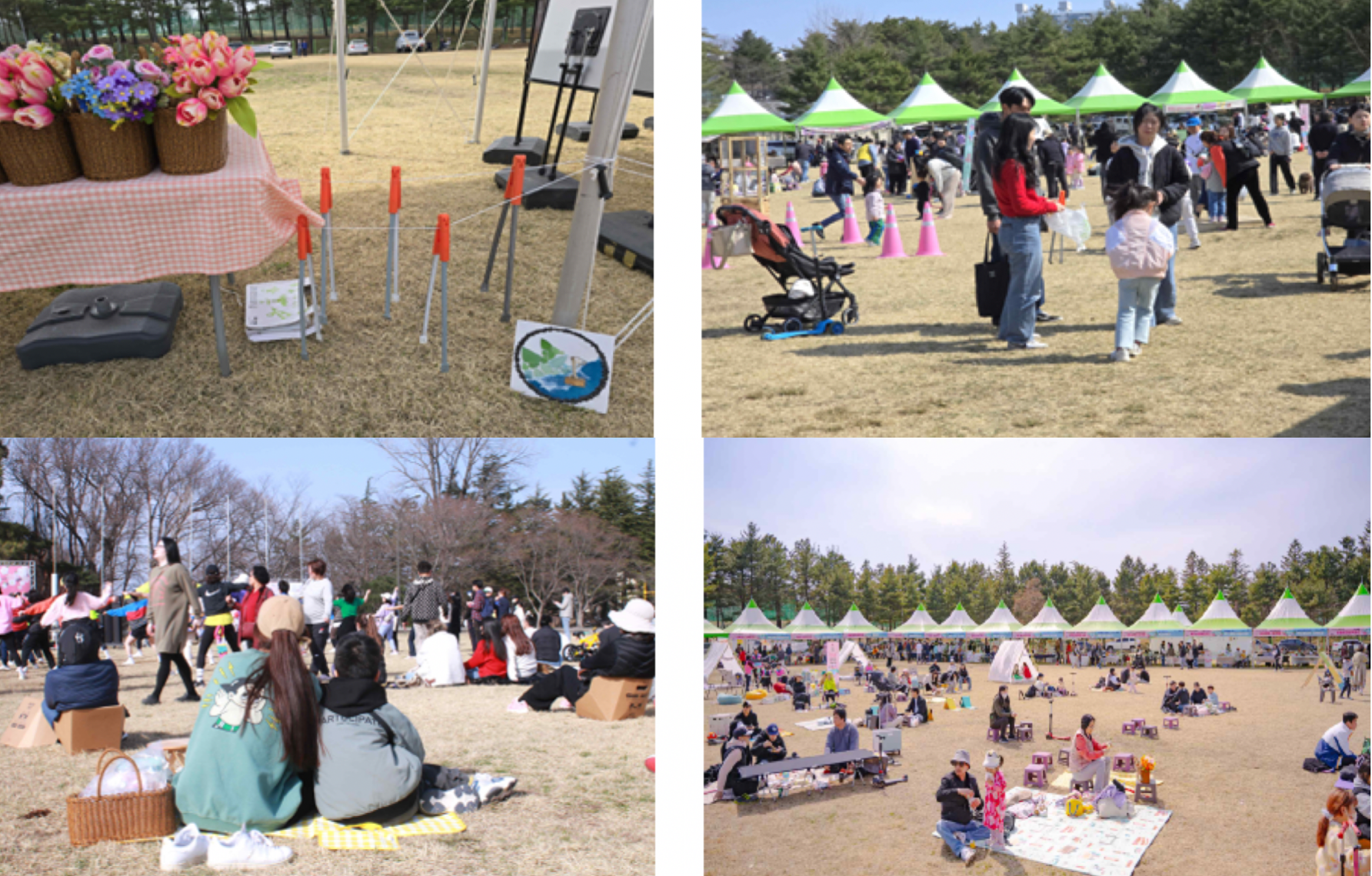
(Source: Preliminary Social Enterprise ‘Bit-nargo’)
② Resource Recycling in Exhibitions and Programs
The Yeongrangho Cherry Blossom Festival highlighted the importance of resource recycling by offering a variety of hands-on programs. A photo zone made from discarded bicycles and wooden pallets not only provided visitors with a unique visual experience but also raised awareness about the value of recycling. Most of the props used at the festival were created through upcycling abandoned materials, showcasing the potential for giving new life to discarded resources. From the opening ceremony, the festival promoted its eco-friendly vision through a performance called the “Cherry Blossom Bottle Cap Eco Performance”, using collected plastic bottle caps as part of an artistic display. Festival booths also featured a hands-on program where visitors could upcycle their own bottle caps into keychains, allowing them to actively engage with and experience the concept of resource circulation.

(Source: Preliminary Social Enterprise ‘Bit-nargo’)
③ Use of Eco-Friendly Energy
The eco-friendly electric bicycle experience program offered participants a unique opportunity. Visitors became energy producers by pedaling the bicycles to generate electricity themselves. The power generated by the bicycles was converted into kinetic energy like a small power plant, creating bubbles throughout the festival grounds and adding a magical atmosphere to the event. For many, who are usually only energy consumers in daily life, this hands-on experience allowed them to explore the possibilities of renewable energy transition and reflect deeply on how to implement it in their own lives.
The Yeongrangho Cherry Blossom Festival continued into the night, offering a dazzling and special nighttime view. Along the Yeongrangho walking trail, a cherry blossom light tunnel was created, adorned with various lights and photo zones that enhanced the romantic atmosphere. Colorful installations such as nature-inspired lighting, firefly lights, illuminated umbrellas, and light frames highlighted the beauty of Yeongrangho even in the darkness. The lights stored solar energy during the day and used that energy to illuminate the festival at night. Using 64W lights for 3 hours a day over 13 days saved approximately 2.5 kWh of electricity, reducing about 12 kg of carbon emissions. Although not a large amount, these small efforts conveyed the value of sustainability to visitors and demonstrated environmentally friendly practices in action, leading to meaningful change.
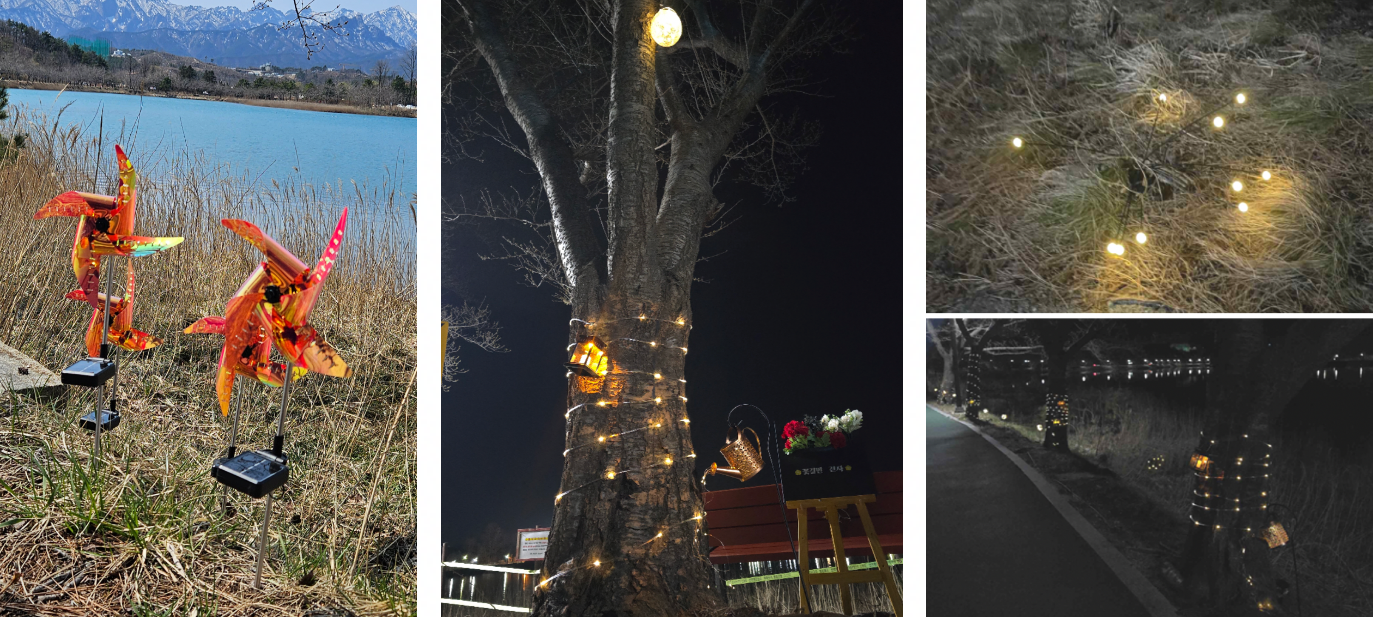
(Source: Preliminary Social Enterprise ‘Bit-nargo’)
Sokcho Beach, a New Wave for a Sustainable Future
Sokcho Beach, a Sea where Birds and People Gather
Having walked around the lake, now let’s head to the refreshing sea. The sea in Sokcho offers a unique charm unlike other coastal cities. The majestic view of Seoraksan Mountain meeting the sea creates a sense of wonder, while Sokcho Beach, with its long 1.8-kilometer white sandy shore and clear waters, has become a popular destination for surfers year-round. Especially famous as a sunrise spot, the sun rising beyond Jodo Island is considered one of Sokcho’s eight scenic views (Sokcho Palgyeong), attracting many visitors who come to make wishes at dawn. At night, glowing photo zones and distinctive sculptures capture Sokcho’s spirit and memories, making the beach a trendy hotspot on social media.
Sokcho Beach is a place where people and nature harmoniously coexist, serving as an important habitat for birds and a hub for diverse natural ecosystems. Throughout the year, marine birds such as seagulls, sandpipers, and egrets gather in large numbers along Sokcho’s coast, reflecting the ecological richness and health of the local environment. The clear seawater and sandy beaches provide ideal spots for birds to forage and rest. Amid this beautiful scenery, visitors can enjoy watching the birds soaring freely and experience the wonders of nature firsthand.
Additionally, Sokcho Beach serves as a model for sustainable tourism at the boundary where marine and terrestrial ecosystems meet. Eco-friendly approaches are emphasized to allow visitors to observe birds and nature up close without harming the environment. Sokcho City has made efforts to protect the coastal ecosystem by reducing single-use plastics and promoting beach cleanup activities, creating an environment where visitors can truly connect with nature. By allowing people to directly experience the beauty and value of the natural world, while providing a vibrant habitat for birds, Sokcho Beach stands out as a unique space that fosters harmonious coexistence between humans and nature.
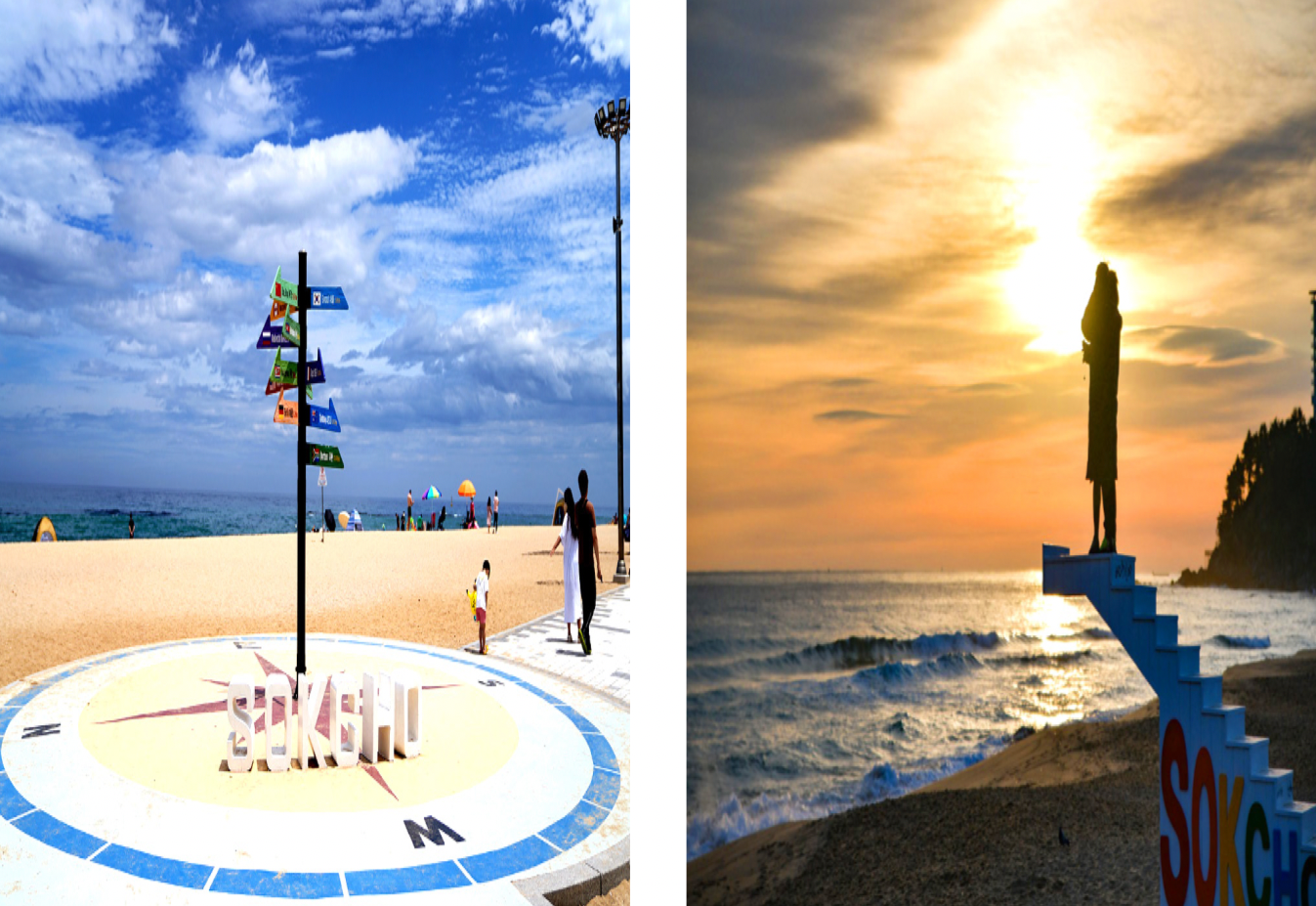
(Source: Sokcho City Hall Website > Tourist Attractions > Nature Tourism)
The First Eco-Friendly Festival at Sokcho Beach: Sokcho Eco-Vacance(2023)
Sokcho Eco-Vacance is a special summer festival held at Sokcho Beach, themed around environmental protection, health, and relaxation. In collaboration with local youth enterprises, the festival emphasized recycling and eco-friendliness, offering visitors a vision of a sustainable summer vacation.
The festival offered not only active programs like the Muscle Beach Challenge but also wellness experiences such as beach runs and morning meditation sessions. Participatory eco-friendly activities, including plogging (picking up litter while jogging) at dawn, making keychains from coffee grounds, and crafting natural material pouches, were also available and received enthusiastic responses from many visitors. Additionally, the festival site featured sculptures and photo zones made from recycled materials, creating spaces where attendees could experience the concept of “eco life,” which balances environmental care with personal health. These installations remained on the beach after the festival ended, serving as photo spots and symbols conveying the message of environmental protection to visitors.
Sokcho Eco-Vacance went beyond simply providing attractions; it established itself as a festival that encouraged visitors to empathize with environmental issues and reflect on the importance of sustainable travel. Over the course of nine days, the first eco-friendly festival held at Sokcho Beach attracted 35,000 visitors. Here, we take a closer look at the initiatives and achievements of Sokcho Eco-Vacance.
① Creating an Eco-Friendly Festival Site through Resource Recycling
The Eco-Vacance festival site itself was planned with eco-friendliness as the primary goal. At the main entrance, a photo zone was created by painting on discarded wood, and the gate was decorated with driftwood and buoys that had been collected. Sixteen pieces of artwork made from discarded buoys were displayed, and a wall-cum-fence was constructed using 27 art pieces made from reclaimed pallets. Additionally, twenty surfboards abandoned in Yangyang were collected, painted, and installed as artworks. This intuitive design not only gave the festival site an exotic feel but also clearly conveyed that it was created using discarded materials.
At Sokcho Eco-Vacance, great care was taken in producing and using goods with the environment in mind. The only newly produced item for this event was bamboo toothbrushes; otherwise, existing goods and eco-friendly sponsored products were primarily used. Various companies donated vegan products and environmentally friendly items to provide to visitors, and goods from previous events organized by Sokcho City were reused as much as possible throughout the festival site. By utilizing existing stock and sponsored items instead of creating new products, the festival minimized unnecessary resource waste and upheld its commitment to environmental protection in line with the spirit of Eco-Vacance.
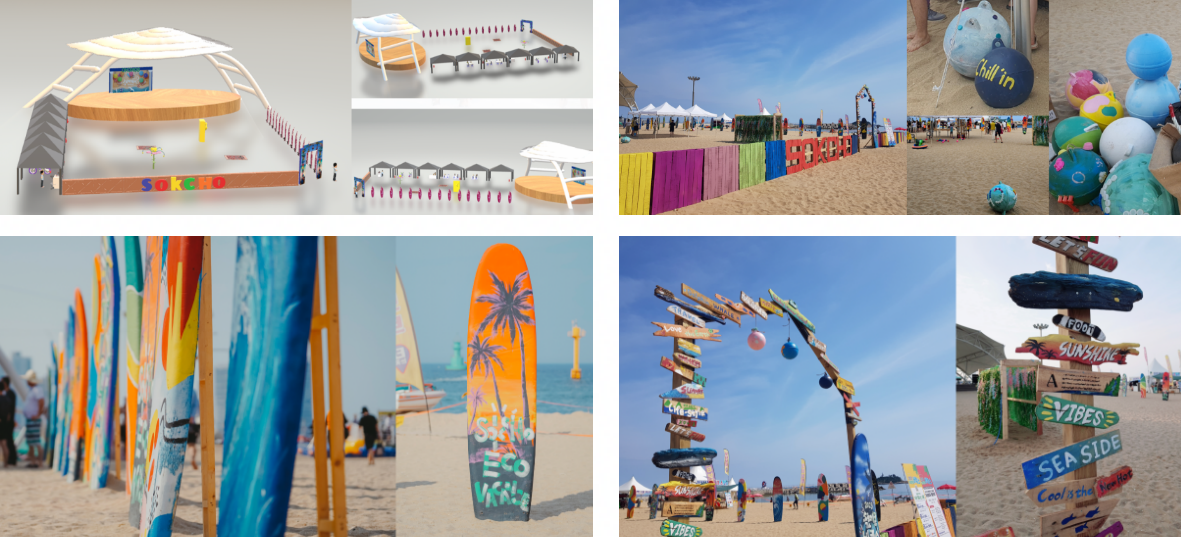
(Source: Preliminary Social Enterprise ‘Bit-nargo’)
② Providing Opportunities to participate in Environmental ACTs through Eco-Friendly Booths
Efforts toward carbon neutrality were evident in the five booths operated at the festival. At the “Beach Instant Photo Booth,” recycled marine debris and collected waste materials were used as props, naturally raising visitors’ awareness of environmental issues. Mihyun Jung, CEO of Bit-nargo, the prospective social enterprise managing Eco-Vacance, explained the festival’s unique approach: “Rather than simply switching materials, we transformed marine litter and waste resources collected over several years through our ‘Ssudam Sokcho6)’ activities into exhibits and art objects.” In fact, marine debris gathered over two to three years was displayed as art pieces and objects, including buoys and driftwood washed ashore. Additionally, after the beach opened, many sand toys were collected and repurposed, and sea glass was picked up, painted, decorated with drawings, and assembled into sculptures.
The “Self-Powered Electric Bicycle” booth at Sokcho Eco-Vacance offered visitors a unique experience. Visitors could pedal and generate electricity themselves using a custom-built self-powered bicycle on display. Due to its popularity, this bicycle was later reused at the Yeongrangho Cherry Blossom Festival. In tune with the summer festival atmosphere, the generated electricity powered not only bubbles but also fans that provided a cool breeze. Through this hands-on experience, visitors actively participated in producing energy rather than just consuming it, gaining a deeper appreciation for the value of electricity generated through self-power.
The “Precious Plastic Sokcho” booth, which was Sokcho’s first attempt at bottle cap upcycling, attracted significant attention as a space for creative recycling. At this booth, visitors witnessed the process of melting bottle caps to create new products. Attendees could either bring their own bottle caps or exchange trash collected from the beach, such as spent shells, for bottle caps to participate in making upcycled items firsthand. By recycling five bottle caps, one keyring was made. Throughout the event, 900 visitors took part, resulting in a total of 4,500 bottle caps being recycled. In terms of carbon footprint, this equates to an estimated reduction of about 5 kilograms of CO₂ emissions7).
Bottle caps are typically made from high-density polyethylene (HDPE) or polypropylene (PP), and if not recycled, they leave a significant carbon footprint during manufacturing and disposal. However, by upcycling them, a substantial amount of carbon emissions can be reduced. The booth staff explained this process and its environmental significance to visitors, naturally encouraging interest in resource upcycling8).
Additionally, due to its nature as a tourist destination, Sokcho Beach experiences frequent fireworks displays, leaving behind dozens to hundreds of firework debris pieces daily. Instead of simply issuing warnings or imposing restrictions, efforts were made to raise environmental awareness through collection and upcycling of the debris. Children, in particular, enthusiastically participated as if on a treasure hunt, collecting about 1,200 spent shells. This initiative successfully achieved both environmental protection and educational goals.

(Source: Preliminary Social Enterprise ‘Bit-nargo’)
At the “Coffee Grounds Playground” booth, visitors were able to participate in recycling activities using coffee grounds. Coffee grounds are generally discarded, but if properly recycled, they can greatly benefit the environment. For example, by reusing coffee grounds, the amount sent to landfills can be reduced, thereby preventing methane gas emissions. Methane is a greenhouse gas 21 times more potent than carbon dioxide, and if not properly managed, it has a significant impact on global warming. According to research, organic waste like coffee grounds can be transformed through reuse into valuable products such as biodegradable materials or carbon storage devices.
At this booth, participants learned how to create creative crafts and products using coffee grounds. Not only do they contribute to reducing carbon emissions, but they also take part in a broader movement to decrease waste and minimize environmental impact. It is said that recycling 1 kg of coffee grounds can reduce about 1.3 kg of carbon dioxide emissions. Through the experience, participants were able to learn and directly feel how a small action like recycling coffee waste can contribute globally.

(Source: Preliminary Social Enterprise ‘Bit-nargo’)
③ Waste minimization through continuous plogging and careful effort
During the Eco-Vacance period, wellness programs including meditation and running were held early in the morning, and all programs concluded with beach plogging. In particular, the program called “Early Morning Ssedam” conveyed a deep meaning to participants with the slogan, “Soothing the mind while listening to the sound of waves, and caring for the environment by picking up trash on the beach.” This program took place along the beaches of Sokcho, where participants experienced environmental protection in practice through plogging alongside nature. The festival staff established and rigorously adhered to the principle of using reusable containers. There were no shops selling or buying goods within the festival, nor any booths that could generate waste. This approach minimized waste generation, and as a result, only 34 kg of waste was produced throughout the festival. This amount was far less than expected and demonstrated the effectiveness of the festival’s eco-friendly management policies. For reference, according to the Korea Environment Corporation’s “2022 National Waste Generation and Disposal Status,” the average amount of waste generated per person per day is 1.2 kg. Considering the festival had about 35,000 visitors, the fact that only 34 kg of waste was produced during the event highlights just how minimal the waste output was.

(Source: Preliminary Social Enterprise ‘Bit-nargo’)
The Eco-friendly Festival at Sokcho Beach continues
The Sokcho Sea Festival (2024) was a more advanced event centered on eco-friendliness and sustainability, building on the successful attempt of the Sokcho Eco-Vacance (2023). Various eco-friendly experience zones were operated at the festival, allowing participants to directly engage with the importance of recycling and environmental protection. Through activities such as making upcycled plastic keyrings, coffee ground pencils, and sea glass magnets, festival participants experienced contributing to the environment by recycling waste materials. Additionally, eco-friendly sculptures made from recycled materials and air sculptures featuring marine life images were installed, transforming the festival site itself into a space mindful of the environment. In particular, the festival continued its efforts to minimize waste by reducing plastic use and adhering to the principle of using reusable containers. An eco-friendly photo zone was also set up to introduce art pieces made from recycled materials to visitors. During the festival, over 124,000 visitors came to Sokcho Beach, and an analysis of visitors in 2024 showed that the festival period saw the highest crowd levels. Based on these experiences, it is planned to continue hosting sustainable, carbon-neutral festivals next year as well, making Sokcho’s summer festival an eagerly anticipated annual event that achieves both regional cooperation and environmental protection.

(Source: Sokcho City Tourism and Festival Marketing Team)
Seorak Mountain, a Treasure Trove of Ecosystems and a Link to Carbon Neutrality
UNESCO Biosphere Reserve, Seorak Mountain
Having strolled by the lake and swum in the sea, let’s now head to a beautiful mountain. Seoraksan is a famous mountain featuring over 30 majestic peaks, including Daecheongbong, the third highest peak in South Korea at 1,708 meters. This mountain is located at the heart of the Baekdudaegan mountain range and surrounds Sokcho like a protective screen. Seoraksan covers a vast area of 398.237 square kilometers and is a treasure trove of ecosystems, home to 1,292 species of plants and 1,936 species of animals. In 1982, it was designated as Korea’s first UNESCO Biosphere Reserve. It is also managed as a Category I National Park by the International Union for Conservation of Nature (IUCN)9). The granite cliffs, picturesque valleys, and grand ridges meet the East Sea, creating a mysterious and enchanting landscape. Since ancient times, Seoraksan has been a renowned destination visited by countless monks and scholars. Today, hikers enjoy trekking here, feeling close to nature and finding healing in the mountain’s beauty.
The Seorak Cultural Festival began as the first Seorak Festival in 1966 and marked its 58th anniversary in 2023, making it a long-standing regional event. This festival traces its origins to ancient ritual ceremonies and serves as an occasion to share the culture and traditions of the Seorak region with the citizens of Sokcho. Various representative rites and traditional performances of the area are held during the festival. Major programs include ceremonies such as the “Sanshin Rite,” “Dragon King Rite,” “Seonghwang Rite,” and the “Samshin Joint Rite,” which express gratitude to the spirits of Seoraksan and nature, and pray for the well-being and prosperity of local residents. The festival plays an important role in deepening the understanding of local culture, preserving the traditions of Seoraksan and its surroundings, and offering a meaningful event where citizens can participate together. In connection with the Seorak Cultural Festival, a new attempt was made in the fall of 2023. At Expo Tower Square, with Seoraksan as the backdrop, the Sokcho Food Festival “Masupda! Sokcho” was held for three days, where efforts to reduce carbon emissions were also evident.

(Source: Sokcho City Hall Website > Tourist Attractions > Nature Tourism)
‘Masupda! Sokcho,’ an Eco-Friendly Gourmet Festival held against the backdrop of Seorak Mountain
The 2023 Sokcho Food Festival, “Masupda! Sokcho,” received high praise not only for promoting the region’s signature dishes but also for its innovative efforts to achieve eco-friendliness and carbon neutrality. While food festivals are often associated with the use of disposable items and food waste problems—putting them at odds with environmental goals—the Sokcho Food Festival introduced various eco-friendly practices to address these issues, proving that food festivals and environmental protection can go hand in hand.
Carbon Reduction through the Use of Reusable Containers and a Waste Minimization System
The core environmental strategy of the festival focused on the use of reusable containers and food waste management. The festival provided 12,000 reusable containers and supported over 40,000 eco-friendly utensils, significantly reducing plastic use. By using eco-friendly products such as reusable containers, biodegradable takeout cups, bowls, and bamboo utensils, the festival achieved a reduction of approximately 900kg in carbon emissions. This is equivalent to the effect of planting 140 trees that have been growing for over 30 years. Additionally, the festival operated a ‘Challenge Yourself’ campaign booth, where visitors who brought their own containers and tumblers were given eco-friendly products, encouraging sustainable consumption.
Significant efforts were also made in the process of food waste management. The festival set up eco-friendly food waste disposal zones and operated booths for the return of reusable containers and the disposal of food waste, minimizing waste generation. Devices that counted the number of returned containers and guides on food waste disposal helped inform visitors about the importance of environmental protection. As a result, attendees were able to experience the eco-friendly festival firsthand and naturally develop a sense of responsibility toward the environment.
The most memorable part of the Bibimbap performance at the Sokcho Food Festival was the fun and creative solution of using puffed rice instead of disposable containers. After the large bibimbap, featuring vegetables labeled with “Masupda! Sokcho,” was mixed, the dish was served in the form of rice balls placed on top of puffed rice. By replacing disposable containers with puffed rice, the event effectively reduced 500 pieces of waste. Additionally, a low-salt fermented seafood, which was part of the festival’s traditional Sokcho jeotgal demonstration, was added on top of the bibimbap. This not only promoted local specialties and minimized food waste but also provided participants with an opportunity to experience local culture, achieving a triple benefit in one action.
Of course, using puffed rice cake as a container could have been inconvenient, but attendees found the experience of placing rice balls on top of the puffed rice and eating it to be a unique one. Some even added another puffed rice piece on top like a lid, enjoying it in the style of a rice burger. In this way, some participants took the initiative to find ‘better solutions’ on their own, presenting creative solutions that aligned with the festival’s purpose. It was a scene where people voluntarily embraced the inconvenience and made efforts toward sustainability.

(Source: Sokcho City Tourism and Festival Marketing Team)
The continuous challenge of “Masupda! Sokcho” towards Carbon Neutrality, resembling the spirit of Seorak Mountain
The 2024 “Masupda! Sokcho” festival further strengthened its eco-friendly approach and achieved significant results in line with its goal of operating a sustainable festival, building on the success of 2023. Through campaigns like the “Challenge Yourself” initiative, visitors were encouraged to engage in eco-friendly actions, and active promotion was carried out via blogs and media. In addition to the use of reusable containers, the festival provided various opportunities for participants to practice sustainable behaviors, such as promoting walking challenges and encouraging the use of tumblers.
A service was provided to rent three types of reusable containers, and active encouragement for their use was promoted through meetings before and after the event. Real-time announcements and various events successfully engaged the public, further spreading eco-friendly practices. During the festival, a total of 22,935 reusable containers were used, resulting in a reduction of 1,123,815g of carbon emissions. This is equivalent to the amount of carbon absorbed by a pine tree over approximately 170 years, and it is a significant achievement in that it effectively reduced carbon emissions from single-use containers to 0g during the festival.
The “Masupda! Sokcho” festival presented a model for sustainable festivals that prioritize environmental protection while boosting the local economy. It was operated with a focus on eco-friendly practices such as the use of reusable containers and carbon emission reduction. These efforts will not only positively impact the local community but also other regional festivals. The festival’s successful model is expected to evolve further and become an important example, leading sustainable festivals in other regions.
3. The Success Factors and Challenges of an Eco-Friendly Festival
To explore the factors that enabled Sokcho’s local festival to successfully implement eco-friendly initiatives, I interviewed Team Leader Kyungsook Kim of the Sokcho City Tourism and Marketing Festival Team, as well as CEO Mihyun Jung of the prospective social enterprise “Bit-nargo,” which organized the “Yeongrangho Cherry Blossom Festival” and “Eco-Vacance.” Based on these interviews, I analyzed three key success factors and the challenges encountered in realizing an eco-friendly festival.
Success Factors of Sokcho’s Local Festival in practicing Carbon Neutrality
Planning that reflects the Needs of Stakeholders
In 2023, Sokcho declared itself a carbon-neutral leading city and has since established various policies, achieving notable outcomes such as the 2024 Korea Green Climate Award, hosted by the National Assembly’s Climate Change Forum. With growing interest from tourists in environmental issues, Sokcho City Hall also moved towards planning carbon emission reduction and sustainable festivals. Team Leader Kyungsook Kim emphasized the need for programs that could meet the needs of both citizens and tourists, highlighting the importance of “combining eco-friendly elements with the festival.” Furthermore, the organizers reflected these needs and successfully led the eco-friendly local festival by presenting ideas that could simultaneously achieve environmental protection and the effective use of tourism resources.
Creative Ideas from Preliminary Social Enterprises and Young People
Team Leader Kyungsook Kim mentioned that innovative ideas from young people in their 20s and 30s, along with companies that possess such ideas, played a crucial role as valuable resources. Among the factors that contributed to the success of the eco-friendly festival during Sokcho’s 2023-2024 local festivals, the involvement of the youth social enterprise “Bit-nargo” cannot be overlooked. CEO Mihyun Jung of “Bit-nargo” stated, “We wanted to address environmental issues in a fun and engaging way,” and added, “Through the festival, we wanted to naturally raise awareness of the importance of environmental protection and provide opportunities for people to practice it together.” The creative ideas of “Bit-nargo” went beyond simply making the festival enjoyable; they contributed to improving the local community’s awareness of environmental issues and taking steps toward a sustainable future.
Sincere and Genuine Planning for Sustainable Practices
There is a saying, “A journey of a thousand miles begins with a single step.” It means that even the biggest tasks start with small actions, and the beginning is crucial. CEO Mihyun Jung emphasized, “In planning an eco-friendly festival, it’s important to be cautious of greenwashing and carefully attempt changes from the smallest aspects.” The goal was to ensure that the “eco-friendly” festival was not superficial but instead focused on achieving real results. She believed that the process of drawing meaningful outcomes, even from a single booth, was important. She expressed a desire to continue creating successful examples through small, thoughtful efforts and gradually achieve larger changes and expansions. Team Leader Kyungsook Kim, in relation to the eco-friendly festival held in Sokcho, emphasized the importance of collaborating with the local community, linking resources, and engaging in practical environmental protection activities. Practical eco-friendly elements were introduced at the festival site, and participants were encouraged to practice sustainable actions. Additionally, through her role as a host, she effectively conveyed the eco-friendly message throughout the event and highlighted the achievement of actively engaging both local residents and tourists.
Challenges in Realizing an Eco-Friendly Festival
The Cost Aspect
Eco-friendly festivals incur significantly higher costs than traditional festivals. Using reusable containers or environmentally friendly products (such as PLA or containers made from corn starch) is more expensive than traditional, cheap plastic products. While these items replace single-use plastics, they increase the overall cost burden. Additionally, activities related to zero waste, such as resource recycling and utilizing waste materials, also generate extra costs, leading to an overall increase in the budget. Therefore, securing a budget to properly implement eco-friendly elements becomes a significant challenge.
Aesthetic Aspect
Eco-friendly festivals find it challenging to balance beauty and functionality. When using natural materials or recycled resources, there can be limitations in appearance or durability. For example, photo zones made from paper are sensitive to weather and external conditions, requiring frequent reinforcement, which incurs ongoing maintenance and additional costs. In this process, maintaining eco-friendly elements while preserving the aesthetic experience provided to participants becomes a significant challenge.
The Aspect of Safety
Even while using eco-friendly products, the safety of the festival site must be ensured. Recycled materials or eco-friendly alternatives may have lower durability and pose a risk of breakage, which can increase safety management costs. For example, if materials break or fall, they could cause accidents, so thorough management is required to prevent this. Additionally, even natural materials must still meet safety standards, which necessitates additional costs and measures to ensure compliance.
The process of Users Enduring Inconvenience
Eco-friendly festivals often require participants to endure some inconvenience. For example, photo zones made from paper materials can easily be damaged or collapse depending on the weather, requiring frequent reinforcement. Additionally, using reusable containers or eco-friendly products presents the challenge of changing participants’ habits, as they need to shift from the convenience of disposable items. While the effort to realize eco-friendly values will gradually become more familiar over time, it can be a significant challenge in the beginning.
How to Incorporate “Eco-Friendly Elements” and the Issues of “Compromise” and “Greenwashing.
The most important aspect of an eco-friendly festival is to avoid greenwashing and maintain authenticity. Deciding how to incorporate environmental elements is itself a challenging issue. The commonality among the local festival cases in Sokcho is that, during the planning stage, they made efforts to start with even the smallest aspects, reducing unnecessary resource consumption and actively utilizing resource recycling. Since it is difficult to make every element perfectly eco-friendly, it is crucial to set strict standards for compromise and ensure that greenwashing does not occur. Continuous efforts are required, and detailed planning and execution are necessary to achieve this.

(Source: Sokcho City Tourism and Festival Marketing Team & Preliminary Social Enterprise ‘Bit-nargo’)
4. The Significance of Sokcho City’s Eco-Friendly Festival Cases
Local Festivals where Eco-Friendliness is Not an Addition, But the Main “Kick.”
The word “kick” used in cooking typically refers to an ingredient or strong flavor that adds a special taste or aroma. Sokcho City’s three festivals — the “Yeongrangho Cherry Blossom Festival,” “Eco-vacation,” and “Masupda! Sokcho” — are examples where “eco-friendliness” is not merely an element of the local festival but the main “kick.” This study presents the significant implications of how Sokcho City has implemented eco-friendly local festivals, set against the natural environments of “lake,” “sea,” and “mountains.”
Firstly, the significance lies in the fact that by holding festivals that utilize the region’s natural environment, the festivals themselves coexist with the environment and provide an opportunity to experience its values. Furthermore, Sokcho City went beyond simply making “environment” the theme of the festival, and instead integrated eco-friendly elements throughout the entire festival operation process, infusing it with authenticity. For example, the use of waste materials for structural installations, minimizing single-use products, and using sustainable materials enabled eco-friendly practices throughout the entire festival.
Additionally, this festival provided a platform for both citizens and tourists to experience and empathize with the need for environmental conservation, acting as an opportunity to incorporate eco-friendly lifestyles into everyday life. Tourists were able to actively participate in using reusable containers, reducing waste, and engaging in environmental cleanup activities, thereby experiencing the true meaning of a festival that harmonizes with nature. This shows that local festivals can go beyond being mere events, contributing to the creation of social and environmental values by proposing and encouraging the practice of sustainable living.
Finally, Sokcho City’s case provides an eco-friendly festival model that can be referenced by other regions. The effort to protect the environment, even at the cost of some inconvenience, can become an essential element of the festival, demonstrating the potential for local communities and administrations to collaborate and achieve sustainable development. Sokcho’s eco-friendly festival, while highlighting local characteristics, has also aligned with global eco-friendly trends, positioning itself as a model with great potential to spread to other regions in the future.
The Language that Connects Carbon Neutrality and Us: ‘Travel’ and ‘Festival‘
“The world is clearly out there. However, how we perceive and accept it is an entirely different matter. Between the world and us, a language is needed to mediate it.” This is a sentence from Yungha Kim’s essay, ‘The Reason for Travel’. If the “world” represents the day when eco-friendly actions become a “daily” practice rather than an “event,” then “travel” and “festival” can serve as effective languages that mediate between us and the world. Travel and cultural activities have the power to help the public newly recognize environmental issues, and through this, they can undoubtedly create change.
The organization “Bit-nargo”, which calls itself a social innovation cultural planning agency, has a name that means “carrying the light of change for a better world.” Their focus is on planning initiatives that can bring innovation to society, especially ones where tourists do not merely visit, consume, and leave, but instead have experiences that involve “caring together.” Activities like the Ssudam Sokcho Campaign, which encourages travelers to naturally participate in picking up litter, are part of this effort to connect visitors positively with the regions they visit. According to Bit-nargo’s CEO, Mihyun Jung, the “light” symbolizes “change.” Through “experiences”, travelers can feel environmental issues firsthand, and this experience can lead to “new attempts”. Eventually, this process will result in the realization of a sustainable tourism model. This response from Mihyun Jung, CEO of Bit-nargo, remains memorable.
Kyungsook Kim, the team leader of the Sokcho City Tourism and Tourism Marketing Festival Team, who is genuinely committed to sustainable local festivals, also emphasized the importance of providing tourists with opportunities to “actively participate in environmental protection activities” rather than simply visiting. She stressed that it is crucial for tourists to “feel the value” of these actions. Through such experiences, tourists develop a deep affection for the local environment and can understand the meaning of the festival on a much deeper level. Furthermore, she pointed out that efforts for eco-friendliness have now become a demand from all stakeholders, and that the goal should be to create local festivals that meet the needs of tourists, organizers, and the community. When tourists actively engage in eco-friendly activities and feel satisfied while contributing to environmental protection, positive interactions form, fostering gratitude between participants. Such festivals and travel experiences go beyond mere enjoyment and can become crucial opportunities to drive change toward a sustainable future.
“An experience of arriving in an unfamiliar place with one’s own will, opening all the senses of the body, and feeling it.”
– Yungha Kim, ‘The Reason for Travel’p. 207 –
“Travel” and “festival” take place when one is ready to embrace new experiences, which allows them to encounter messages about the environment in high resolution. Travelers develop a deeper interest in the areas they visit and can naturally embrace a culture that promotes environmental protection. In the case of Sokcho, despite various challenges, there was a continuous effort to generate ideas and overcome the necessary economic, social, and technical limitations in order to achieve eco-friendly changes.
As more people resonate with the climate crisis, if the dedication of stakeholders and the shift in participants’ awareness align, the wave of eco-friendly festivals will spread more widely. Just like the ripples on a lake growing larger, the waves in the ocean expanding, and the wind blowing between the trees on a mountain, this movement to make environmental protection a part of everyday festival culture will soon become a reality. The Sokcho case exemplifies the foundational beginning and the future potential of this movement.
Footnote
- The spillover effect refers to a phenomenon in which the impact of a certain event or activity extends beyond its original area and influences other areas. Much like water overflowing and spreading to surrounding areas, it describes how an effect that originates in a specific part can ripple outward and affect its surroundings.
- Data from the years 2023 and 2024 were compiled and analyzed using statistics derived from two Excel files downloaded from the ‘Ministry of Culture, Sports and Tourism > Culture Plaza > Regional Festivals > Annual Regional Festival Information’ section.
- A Greener Festival (AGF) provides research on greenhouse gas emissions related to festivals and events, including explanations of “Scope 3 emissions,” which cover not only attendee travel but also on-site emission sources such as food waste, supplies, artist transportation, and venue waste. Through this, it becomes possible to understand the carbon footprint of a festival, including major sources of pollution such as food waste and single-use plastics.
- As of 2023, the number of regional festival attendees was approximately 102,241,437. Based on the per-person carbon emission of 11 kg CO₂e at outdoor festivals analyzed by AGF in 2022–2023, this amounts to roughly 1.13 million tons of CO₂e.
- A single 40-year-old pine tree absorbs approximately 35.75 kg of carbon per year, and about 3,000 trees can naturally grow per hectare.
- ‘Ssudam Sokcho’ is an environmental protection initiative taking place in Sokcho, operated by the prospective social enterprise ‘Bit-nargo’. The program involves collecting marine debris and waste resources, which are then creatively upcycled. ‘Bit-nargo’ originated from marine cleanup efforts and a beach clean-up community, and since 2021, it has been continuously conducting beach plogging activities. The collected waste and discarded materials are repurposed in innovative ways as part of their ongoing environmental conservation efforts.
- The carbon emissions from a single plastic bottle cap vary depending on the material and manufacturing process, but generally, about 1–2 grams of carbon are emitted per cap. (1–2g * 4,500 caps = approximately 5 kg)
- Upcycling refers to the process of creating new, high value-added products by adding ideas and design to items that have been discarded, collected after disposal, or are about to be thrown away. In English, this is called “upcycling,” and in Korea, the translated term “saehwalyong” (새활용) is also used alongside it. While “recycling” generally refers to the conventional circulation of waste resources, “upcycling” (or “saehwalyong”) differs in that it enhances the recycling process with creativity and design to produce higher value products. (Source: Korea Environmental Industry Association)
- Category I of the IUCN (International Union for Conservation of Nature) refers to areas that are strictly protected among nature reserves, with the primary goal of preserving natural ecosystems and maintaining biodiversity. This category is divided into two main types: Ia: Strict Nature Reserve These areas are designated to protect ecological, geological, or physiological processes, preserving nature in its untouched state with minimal human impact. Activities such as scientific research and environmental education may be permitted on a limited basis, but public access is largely restricted. Generally, entry is not allowed unless it serves scientific or conservation purposes. Ib: Wilderness Area This type refers to relatively large areas of land where human interference is minimal. The goal is to preserve ecological integrity and the area’s pristine natural condition. In wilderness areas, non-commercial and non-mechanized access with minimal environmental impact is allowed, including low-impact outdoor activities such as hiking, primitive camping, and nature exploration. Seoraksan (Mount Seorak) is designated as a Category Ib (Wilderness Area) under the IUCN system. Seoraksan National Park is managed as a zone with minimal human interference to conserve its natural ecosystems and protect its unspoiled environment. Non-destructive outdoor activities such as hiking and nature exploration are allowed, but only to a limited extent.
References
- 국토교통부, 탄소공간지도 시스템.
- 김혜령 (2023) 화분분석을 통한 한반도 제4기 후기 식생변화 및 고환경연구, 경희대학교 박사학위논문.
- 김효선 (2023) 식물규소체 분석을 통한 제4기 인간활동 및 고환경 복원, 경회대학교 박사학위논문.
- 무브매거진(MOVE) (2023) 속초. Vol. 14.
- 박정재 (2021) 기후의 힘.
- 세계자연보전연맹(IUCN) 공식 홈페이지.
- 속초관광 공식 홈페이지.
- 속초시 관광가이드북 – 오늘, 속초.
- 속초시 교육여행 자료집 -속속들이 속초.
- 속초시 속초여행 관광안내지도.
- 한국문화관광연구원, 예술경영지원센터 (2024) 지역공연축제가 관광객 유치에 미치는 영향.
- 한국환경공단 (2023) 2022 전국 폐기물 발생 및 처리현황.
- 한국환경산업협회(KEIA) 새활용이란?
- A Green Future (2023) AGF Festival Carbon Footprint Report v2.0.
- KCEN, 탄소발자국 계산기.
- WEF (2018.11.19.) 5 innovative ways your coffee grounds can be recycled










